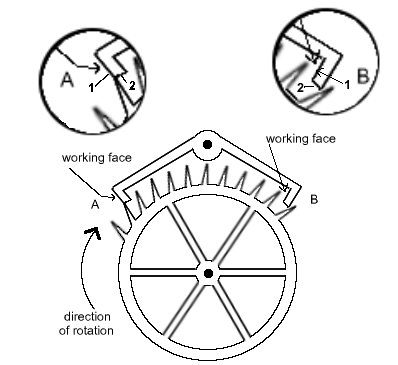Back to Notes From The Bench
index |
Back to text page
on dead beat escapements
Page by:
Perpetual PC's
Copyright (c) 2002 David Tarsi. Permission is granted to
copy, distribute and/or modify this document under the terms
of the GNU Free Documentation License, Version 1.1 or any
later version published by the Free Software Foundation; with
the Invariant Sections being no invariant sections, with the
Front-Cover Texts being no Front-Cover Texts, and with the
Back-Cover Texts being no Back-Cover Texts. A copy of the
license is included in the section entitled "GNU Free
Documentation License".
